#fairytale archetype
Text
Neverafter notes (1) The Time of Shadows
No need to tell you this will contain spoilers - because this is a set of notes I take after watching the entire season.
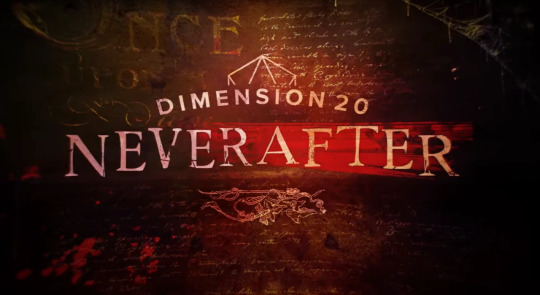
Item 1: The Time of Shadows
Let us begin with the very name of the episode and the motif introduced. We are in the "Neverafter", the world of fairy tales, named after the famous sentence "And they lived happily ever after" ending every English-speaking fairytale. But here twisted with "never" of course - because we are in a time that is beyond the ending of the well-known fairytales, we have passed the "they lived happily ever after" line, and now we are in what can be found afterward. And this afterward turns out to be the "Time of Shadows", dark, dreadful, terrible times befalling upon lands typically in peace and prosperity but now plunged in war and ruins. Kingdoms fall one after the other as great wars ravage the lands, many malevolent entities are very active and spreading destruction wherever they go (they are explicitely listed as giants, witches, wizards and "creatures of the sea"), and there's a bunch of big storms and bad weather everywhere. A true "dark fantasy".
Now the Time of Shadows is here a transposition of a phenomenon preponderant in modern fairytale media and that the website TV Tropes and Idioms has codified and classified as "Grimmification", a term that is a pun (on the brothers Grimm and the adjective grim) and that has gained a big success on the Internet, everybody using it today in opposition to another term popularized by TV Tropes "Disneyification". Grimmification is taking a fairytale and turning it into a much darker, bloodier and sadder tale, a nightmare filled with gore and horror ; hereas Disneyification is doing what Walt Disney did to fairytales - making them look "cuter" and sanitizing them for children and making them much happier and more naive than they used to be. (Of course this is a massive simplification as Disney was not the main one responsible for the "cutification" of fairytales but you get the idea, it works as a simple dichotomy). The Time of Shadows is literaly a transliteration of the phenomenon of "Grimmification".
Now I do want to insist upon the fact that the idea of the "Grimmification" of fairytales is not new, and that it existed long before TV tropes popularized this term. I do want to compare Neverafter and its Time of Shadows with another work that is very similar in terms of vibe: John Connolly's famous "The Book of Lost Things", which precisely describes a fairytale world that regularly undergoes cycle, switching between the "happily ever after", sweet, naive, cartoonish depictions of fairytales we kow today, and much darker times filled with violence, death and horror. A big part of the book precisely relies on the breaking of such a cycle and the "healing" of the fairytale land - in a way VERY similar to Neverafter's own treatment of the Time of Shadows (I wouldn't be surprised if the Book of Lost Things served as some inspiraton, after all it is one of the prime examples of a "Grimmification" book)
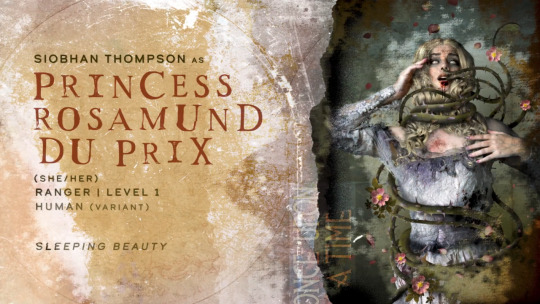
Item 2: Rosamund du Prix
Our first introduced character is Rosamund du Prix, Neverafter's version of Sleeping Beauty. With also added horror, because Neverafter is the horror season - from the briars actually growing OUT of the princess' body when she fell asleep (and her being forced to rip the roots out of her throat, in the very reverse of a fairytale kiss), to Rosamund being forced to experience the atrophy of her muscles after a hundred years sleep and the claustrophobic feeling of being buried alone in masses of thorns. Of course, she falls victim to the Time of Shadows' first rule: the happy endings either do not arrive, or happen in a broken and incomplete way. In the case of Rosamund, this means her prince has not arrived, she woke up from the curse despite not having a "true love kiss", and she is all alone into an entire kingdom prey to magical thorns and sleep.
I will note that this version of Sleeping Beauty is not based on Perrault's story, at least not directly. Yes there were fairies at her birth, and her kingdom is named Rêverie (which is a French word meaning "dreaming"), so there's a Perrault reference in there... But they are slim, very slim. There are stronger references to the brothers Grimm's version of Sleeping Beauty, "Briar Rose", from the constant references to "briars" all the way to the princess being named "ROSamund", but the most obvious reference is all the dead princes in the thorns surrounding her castle. This is actually an element present in the brothers Grimm's verson of the tale, where the briars kill those that try to enter, absent from Perrault's version (the forest is just so thick it is impossible to cross, plus a bunch of creepy stories keeps everyone away).
No, what this version of Sleeping Beauty is actually based upon is... Disney's Sleeping Beauty. I am not just saying that because Siobhan Thompson explicitely plays the character of a Disney princess lost in a world of horror but still hopeful that her "prince will come". But note the explicit number of fairies: four fairies in total in the kingdom, three invited to the birth, the fourth one ignored - and the fourth one being the "wickedest". This is literaly Disney's take on the story, here a transposition of Flora, Fauna, Merryweather and Maleficent as the "four fairies of the kingdom". (As a side-note, here the two first good fairies gifted Rosamund with "beauty" and "grace" - "beauty" explaining why she still looks good even when she has been living like a wild woman in the woods for quite some times now ; "grace" translating in gameplay as added agility and dexterity).
In terms of D&D structure, Rosamund is here the transliteration of a "Ranger" character type, with the reinvention that, waking up all alone in an entire kingdom devoid of human life and overtaken by wild trees and briars, she has to learn how to survive on her own, and even fashioned herself a bow out of thorns. The ranger's affinity to nature is notably coupled here with the cliche of the Disney princess being able to talk to animals or summon them with her song, for hilarious effects (see the nat 1 when Rosamund tries to call for animal help in one of the scariest primeval forests of the Neverafter).
I will highlight here that the briars' voice attempts at explaining to Rosamund how and why they will keep her "safe" has very strong echoes of the Witch's own plea to Rapunzel about keeping her safe in her tower, from the musical "Into the Woods". And I do not make this comparison out of nowhere because, as I will point out later, there are other references to "Into the Woods" meaning this was clearly one of the inspirations behind the Neverafter season (but again, when you do a Grimmification of fairytales, Into the Woods is bound to pop up at some point) [The briars do say "None can touch you in your tower, stay with us", I mean come on!] [I also note that, in terms of world-building, the curse is apparently still maintained within the spindle, because to put Rosamund back to sleep the briars try to prick her again with it]

Item 3: Gerard of Greenleigh.
Gerard of Greenleigh, husband of the princess Elodie, is the Neverafter's version of "The Frog Prince" (originally "The Frog King") by the brothers Grimm. (Elodie fights in the war with a golden mace, as a nod to the gold ball the princess played with in the fairytale)
Gerard's failed "happily ever after" here takes the form of his love with Elodie slowly breaking away due to their incompatible mentalities (Gerard is a self-centered, arrogant, pleasure-seeking prince with no actual knowledge about ruling a kingdom, while Elodie is a serious, no-nonsense girl who tries to maintain her kingdom safe as it is facing a war - we will later see Gerard's character is partially due to his frog transformation, which happened when he was a child and didn't left him much time to get prepared for his role as a prince). As a result of Elodie's love fading away, Gerard is slowly turning back into a frog, currently being a frog/human hybrid (which corresponds to a D&D hobgoblin).
I will point out that the motif of a "de-transformation" being reverse because of love fading away has been done before with a different fairytale in a quite important fairytale modern media. It was done with Beauty and the Beast in the very opening issue of the famous "Fables" comic book , which was a huge influence on fairytale media (before the series kind of went to crap, you know). In the very opening issue we see the Beast slowly turning back into his beast form precisely because he had a big fight with his wife, and it is a recurring joke with the couple during the first doen issues that since their couple has highs and lows, the Beast keeps switching between his human form and a more beastly form, as the curse cannot be fully taken away and relies on his wife's love to be maintained at bay.
Back to Neverafter - we do know that the kingdom of Greenleigh fell, the same way almost all of the other kingdoms of Neverafter fell, in this case due to a war launched upon it by the armies of the Snow Queen (from Andersen's fairytale of the same name), who rules over the kingdom of "Snowhold" (and is explicitely said to have under her control beings/powers of "ice and wind"). I might go as far as to point out a possible parallel with "A Song of Ice and Fire/Game of Thrones" about the Snow-Queen being one of the big antagonists of the Neverafter's background, because as I said before this season has big "dark fantasy" vibes and... "Winter is coming". I thought about this joke because it was exactly done as such in the Fables comic book, again - when the Snow Queen, one of the antagonists, first appears, a messenger before her warns the inhabitants "Winter is coming!", as a nod to Martin's book series. But don't get me wrong, I am not saying it was always meant to be the reference - in many fairytale media the Snow-Queen is depicted as an active antagonist, and a wicked power.
To take another piece of media, there is the famous mini-series "The 10th Kingdom", another important piece of American "fractured fairytale" or "fairytale urban fantasy/portal fantasy" media. Now, the Snow Queen is only alluded to in the series (and sequel novel), but extra-material and outside of series info confirmed that if the mini-series had delved more into the world, the Snow Queen would have been the next big antagonist because she had plans to conquer the entirety of the fairytale kingdoms. Another more recent example of the Snow Queen as an antagonist in a multi-fairytale fiction would be her character within the book series, "The Land of Stories" (with added point that in this series he overthrew the king of the land she rules upon - and if my memory serves me well the Snow Queen of Neverafter kind of overthrew the Tsar of Snowhold? Or something like that? I will need to check it again)
As additional notes: we know the court of Greenleigh has a set of "wise women" that are experts in medecne, tonics and other products of the sort - very likely a nod to how in the Grimm fairytales fairies were replaced by "wise women". And Elodie highlights the innate horror and terrifying metaphysical implications of a "happily ever after" by pointing out how uncomfortable and unwell she feels with the idea that her life ended the moment she married her prince. A very clever line, especially since it works on two levels - the meta-fictional level of a character trapped in a farytale logic, and who stops existing once her story is done ; and the human level of how her story is one of marital troubles and of a couple falling out of love after their wedding.
[Extra-considerations: Names are of course very important, especially in a fairytale setting, especially in a world inspired by the "fae lore", and especially in Neverafter. I can't analyze every name because I don't have all the info needed, but just look at the name of the Frog Prince's land "Greenleigh". "Green", the color of frogs, sounds like "Greenly" and "leigh" means a meadow or a glade. Same thing with how Rêverie is the land of Sleeping Beauty. And given Rosamund's last name is "du Prix" and it is French I am wondering if there was a sort of dark intended pun there... I am probably reading way too much into this, but "du Prix" means "of the price". And can be read as "of the prize" (because a price/a prize is the same thing in French). Is it implying that the princess is literaly the "prize" the prince must win?]

Item 4: Pib
Pib is short for "Puss in Boots" - the character made famous through Charles Perrault's fairy tale of "The Master Cat, or the Booted Cat", better known in the English-speaking world as "Puss in Boots". As with all the other fairytale characters, poor P-I-B (here a reinvention of the Rogue character class) saw his land falling apart and his happily ever after being crushed - quite literaly as a swarm of giants invaded the land and destroyed everything, crushing many buildings and people under their feet. I will highlight again the "Into the Woods" reference - because we are literaly in a setting where, after the "Happily ever after", giants arrive and crush/kill everybody, turning everything into a dark survival tale... Just like for "Into the Woods".
Right before, there was of course a delightful play on considering wha it REALLY means for a miller's son to pretend to be a king - starting with how the poor guy can barely read... I do wonder about the choice of Marienne as the land from which Puss in Boots hail. Since Puss in Boots is a Fench story, Marienne can evoke "Marianne", the female personification of the French Republic, but Marienne sounds distinctively like "Marien", which is the German version of Mary (and is found in places' names, such as Marienbad to take a famous example)... It doesn't help that Amanti, Pinocchio's village (Italian) is apparently within Marienne? So... seems kind of a melting pot of cultural influences.
Not much to say about this, outside of the fact that Pib's boots are blue, which is (I don't think?) a usual color choice when illustrating the story, so nice!

Item 5: Mother Goose
Timothy "Mother" Goose is of course Neverafter's version of the character of Mother Goose/Old Mother Goose, and it is very fitting for a witch-storyteller to be a "bard" within the D&D classification. Now... Mother Goose is quite a convoluted and complicated character that has a bizarre set of origins - long story short she was a a character basically made out of nothing?
If I try to simplify stuff... People have been searching for the origins of Mother Goose for a very long time - quite recently in France there was an entire book dedicated to studying the mythological and cultural roots of the figure - but we can't really say anything before Perrault's time. Before Mother Goose, despite being a British character, starts out in France. An alternative name Perrault gave to his set of fairytales (but it is a name that became far more popular and well-known than the intended title) was "Mother Goose's Fairytales" (Les Contes de ma Mère L'Oie). Except Perrault was not refering any specific character when he wrote that - a "mother goose tale" was just an expression of the time, a name used to designate what we call today "fairytales". There was a whole bunch of these names (contes du loup borgne, tales of the one-eyed wolf ; contes de peau d'âne, tales of donkey skin, contes bleus, blue tales), and they were just expressions nobody knows the true origin of. When Perrault wrote that, it is like someone writing "fairy tales" even though they stories do not include fairies. However when Perrault's fairytales moved to England, the name "Mother Goose" was used as an iconic eye-catcher and a famous "trademark" so to speak. People started publishing nursery rhymes compilations under the name "Mother Goose's rhymes" or something similar, in reference to Perrault's best-selling book. And that was how England started "fleshing out" and dare I say "creating" Mother Goose as a character, as a sort of mascot or emblem of fairytales but ESPECIALLY of nursery rhymes, with which she got closely linked in England.
And while this Mother Goose gets involved with characters of fairytales, Timothy and Pottingham are rather born out of the nursery rhymes world (hence why he comes from the very obviously named "Lullaby Lands"). In fact, the whole thing of Mother Goose having a son named Jack, who ended up finding a goose laying golden eggs, and with a gander tied to Mother, comes from one very specific nursery rhyme which dates from when Mother Goose became a character in England - "Old Mother Goose and her Son Jack" (or variations of). It is an entire nursery rhyme dedicated to explaining the newly born character of Mother Goose (because nobody could agree if she was a literal goose or a witch), while involving her with the British stock-character of Jack, and the fable of the "goose layng golden eggs" (already quite famous thanks to the Jack and the Beanstalk story).
Speaking of Jack - the season does play on the multiplicity of "Jacks" in nursery rhymes and British fairytales, since, if you didn't know, Jack is the stock-name for the average fairytale male hero (every country has one - in Germany it is Hans, in Russia Ivan, in France Jean, etc). As such this Jack is explicitely referenced as being both the Jack from the Old Mother Goose nursery rhyme, and the one from the rhyme "Jack be nimble". [As a side note, the fact of having all the Jacks of rhymes and fairytales be one Jack was popularized, again, by the comic book Fables which precisely played on having fairytale archetypes be a singular character undergoing all those adventures, and had Jack as a prominent character]. The last member of the Goose family is also part of the nursery rhymes reference: Henry Hubbard is a reference to the rhyme of "Old Mother Hubbard". I will note that the nursery rhyme of Old Mother Hubbard was one of the subjects of traditional British pantomime... the same way Mother Goose was a big presence in this genre.
As for the Gander, I can't say much here since it was barely introduced but A) it is immediately set as a "negative/reverse" image of the traditional Mother Goose imagery (when Mother Goose is not humanized, it is a big goose with a bonnet - but in colors reverse to the Gander) and B) The Gander literaly plays the trope of "The Monkey's Paw" and various other twisted takes on the archetype of the genie granting you three wishes, except there is a deadly catch to it.
Already from the get-go we know that one of the roles of the magical book is precisely to "protect" and "preserve" the stories from the Time of Shadows, by literaly putting them back in how they are "supposed" to be and sticking them into this idyllic "happily ever after" paradise-like dimension. Aka... When Jack is in the book he literaly just becomes the Jack of our nursery rhymes, in the real world, the one we know and that has been drawn in so many chilren's book. Basically the book does is reset the story before its "grimmificaton", and return it to its "cutesy, optimistic, simple" format, if not, dare I say it, "Disneyified".
Plus: The flooding of Pottingham and the endless rainy weather is already evoked here.
[I will add that @lostsometime posted about the line with the Gander taunting Timothy with the verb "wander" ; establishing a possible link with the nursery rhyme "Goosey Goosey Gander"]
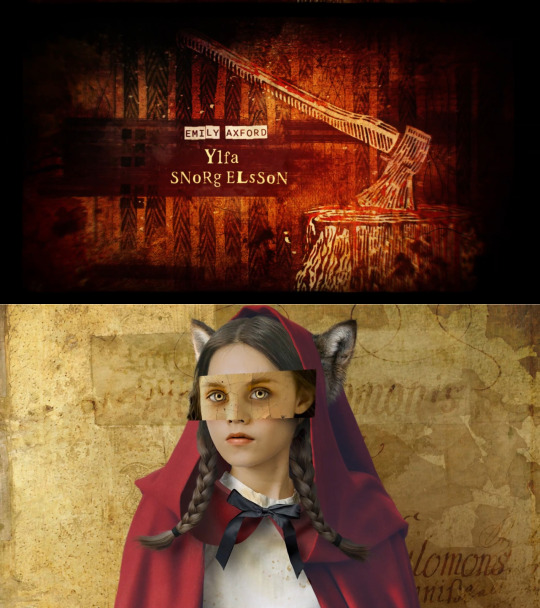
Item 6: Ylfa Snorgelsson
Neverafter's version of "Little Red Riding Hood". Here the character seems to go on from Perrault's version of the story, rather than Grimm, since no woodsman is involved so far and poor Ylfa has been "eaten" by the wolf (here in the sense of - turned into a werewolf like creature). Though if my memory serves me well later episodes reveal it is more related to the Grimm's version of the tale? I'll need to answer that in future notes. [Note: Of course, I do mention the omnipresence of the axe motif around Ylfa's chracter, which does evoke the Woodsman of the Grimm version]
Not much to say here so far... The idea of Little Red Riding Hood being a story tied to werewolves is a modern trope that has been heavily used recently - from this "Red Riding Hood" 2011 movie passing by Zenescope's convoluted and NSFW Grimm Fairy Tales, without forgetting Once Upon a Tme's own dark take on the story. For context and history, the idea of bringing werewolves in the picture was first truly exploited by Angela Carter, in her feminist-Gothic fairytale retelling collection "The Bloody Chamber". In it, she wrote three different short stories (The Werewolf, The Company of Wolves, Wolf-Alice) that interwove together Little Red Riding Hood motifs and traditional werewolf beliefs and legends from Europe. This was the first big landmark in the habit of making Red Riding Hood a werewolf tale, and all three stories were later mixed and adapted into the famous Gothic dark fairytale movie "The Company of Wolves".
Of course, here the "fairytale ending" displacement is by having the game depict what happens when Little Red Riding Hood RETURNS to her house and her family, which is usually never talked about - especially if we follow the Perrault version, where the girl is supposed to be dead. I do love how Ylfa is attached to Mother Goose because, while Mother Goose becomes a sort of "replacement" for the missing Grandmother, it also blurs the line very well between the three feminine characters of Perrault's tale - because in Perrault's version, we have simply a quartet of characters. The little girl, the mother, the grandmother and the wolf - and so having Ylfa refer to Timothy as "Mother" blurs the line between Timothy's character and the archetypal "mother" of the Riding Hood tale... Oh yes, and the wolf of this tale is clearly identified as the Big Bad Wolf that the Three Little Pigs met in their story (the story of the Three Little Pigs is a traditional British fairytale, made famous by Joseph Jacobs on one side, who printed the best-known written version of the story, and Walt Disney on the other with his famous Three Little Pigs shorts).

Item 7: Pinocchio
No need to tell you that Pinocchio is... well Neverafter's version of Pinocchio, the famous character of Carlo Collodi, reinvented and repopularized by Walt Disney. Here turned back into a wooden puppet after winning his life as a "real boy", because he told a lie to save his father...
The interesting thing with Pinocchio is his reinvention in DnD classifications. Of course, the choice of the Warforged to work as a "Puppet" is obvious, but more fascinating is making Pinocchio a Warlock - with as his Patron the mysterious Stepmother, THE archetype of all Wicked Stepmothers... But more about her later. There's also the whole thing with the broken nose becoming his "wizard staff" and it is all so delightful.
As a worldbuilding note, we have in Pinocchio's backstory the apparition of the Wicked Fairy. Now we know that in this universe there are four fairies (due to Sleeping Beauty's background and how the number of fairies change depending on the universe), and that the Wicked Fairy that visited Pinocchio's village is the same as the one that cursed Sleeping Beauty. This also implies that the Fairy with Turquoise Hair and the Fairy Godmother we will later meet were part of the three fairies invited to Rosamund's birth... But who was the fourth fairy? If I recall, she does not have the time to be described since we jump off that universe too early... This Wicked Fairy is meant, as I said before, to emulate Disney's Maleficent, but since she is apparently most if not all the "wicked fairies" of this version of the Neverafter, I will dare invoke the name "Carabosse" to designate what she is meant to represent.
For those who don't know, Carabosse was a name chosen in the famous Tchaikovsky ballet adaptation of Sleeping Beauty for the wicked fairy. This ballet-Carabosse was one of the main inspirations behind Disney's Maleficent, and helped popularize the idea that "Carabosse" was the name of the archetypal wicked fairy. Especially in France where Carabosse is basically THE wicked fairy the same way in Russia Baba-yaga is THE witch. But the funny thing is that the name "Carabosse" does not come from Perrault's Sleeping Beauty... It comes from an unrelated fairytale written by madame d'Aulnoy, who was one of the most intensive makers of "wicked fairies" - and Carabosse was but one of those dozens of indiviual evil fairies, each with their own personalities, quirks and twists. But thanks to Tchaikovsky, she hijacked Sleeping Beauty and now almost every modern adaptation or retelling of the fairytale in French use Carabosse as the name of the fairy that delivers the curse. [Plus, we discovered during the minis auction that the Wicked Fairy's name was Bosartia... Maybe it is a link to CaraBOSSE? BOSartia? Who knows, my thing is overanalyzing stuff and finding links where there's not]

Item 8: The Chandling caravans
I just noticed that there is a total of seven players around the table - the six characters plus the game-master, which actually fits very well a fairytale world since seven is one of the key numbers.
Now we get into the main "plot" of the episode, so my notes will be a little less constructed.
Gerard and Rosamund are cousins "three different times" - I do love the joke that royal families in fairytales are just as inter-bred with each other as they were back in medieval and Renaissance times.
Shoeberg and its inhabitants and the woman that founded the town are of course from the nursery rhyme "There was an old woman who lived in a shoe".
We have a "troll-son""trollson", which is apparently a type of beings designated as such because they are the descendants of trolls (presumably they are from lines mixing human and troll). (I believe there is a pun here on how "son" is literaly a suffix in Nordic countries meaning "son of" or "descendant of").
The caravans are referred to as the "Chandling caravans", the "Chandling company". Now, given "Chandling" might be derived from "chandler", and the business of candle-making... Maybe it is a Rub-A-Dub-Dub/Three Men in a Tub" reference? The nursery rhyme which has "The butcher, the baker, the candlestick-maker"? But I am probably reading way too much into this... There's other nursery rhymes that could fit - such as an old British children song "Tommy kept a chandler's shop". But it might be completely unrelated...
Lord Bandlebridge's comment about beggars is definitively just a classist statement, but it does confirm that witches, fairies and ogres have an habit of disguising themselves as beggars.
The tricking of Bandlebridge works so well because, as Brennan Mulligan highlights (I know I should be using these people's first name like everybody else in the fandom but it feels weird, we're not on first-name basis), he believes in the fairytale untold rule that you must "grant every request the magical being [that you receive as a host] makes" in order to be rewarded.
The enchanted logs that ward off people from "goblins and boggarts" as long as someone tells a story by its fire is a genius way to highlight the need for "campfire tales".
The character leading the caravans is from the story of "The Little Red Hen" (hence the whole "You help or you don't get to eat"). Fun fact, this story is not from any "traditional" European corpus of fairytales - it is an American story that Mary Mapes Dodge had printed in the 19th century as a "fable".
Old King Cole from the kingdom of Jubilee is of course from the nursery rhyme involving the character of the same name (though I do have to say, the idea of a big bearded large warrior in a chariot drawn by a ram immediately made my mythological brain think of Thor).
I remember that when the episode was released a lot of people were excited at the idea that the giant teapot drawn by a giant rabbit was a Alice in Wonderland reference... More about that next episode.
Finally, the "Black Wood", identified as one of the several "primeval forests" of the Neverafter. I don't think I need to explain what kind of topos this is playing off here.

14 notes
·
View notes
Text
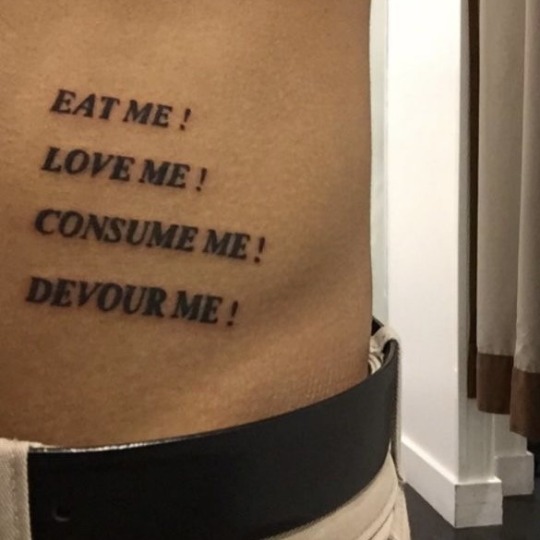


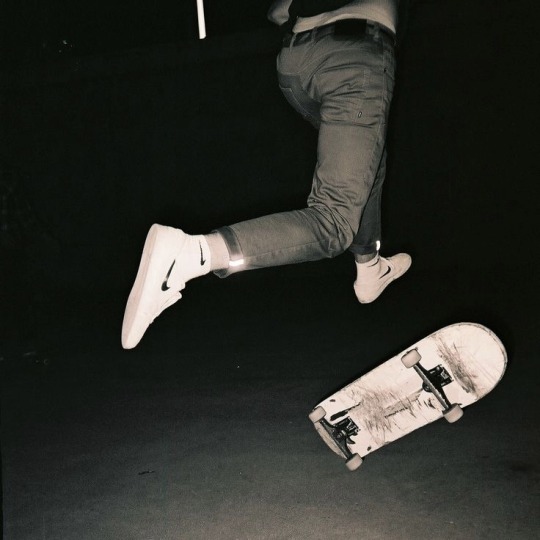


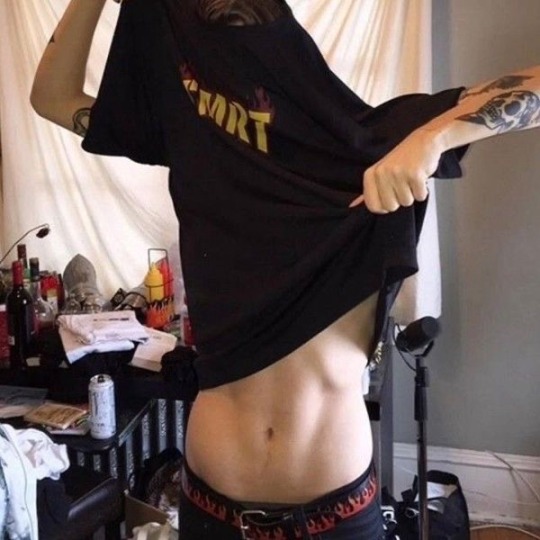



this is what barty crouch jr feels like. if anyone cares.
#SORRY THIS IS JUST FOR ME. HES SOOO LANCELOT IT MAKES ME SICK#what if the archetypical fairytale knight was also a fundamentally bad person. what if he was also? like? an edgy e-boy?#he was doing all that and in Vans too?#t#barty meta tag#character of all fucking time#barty crouch jr#mb
345 notes
·
View notes
Text
the perennial Tai Discourse is really interesting to track bc, speaking broadly, the two major camps are just:
those who focus primarily on ruby’s recollection of her childhood and relationship with her dad (and filter what yang says through that lens such that “i had to pick up the pieces and keep things together when i was five” gets diluted into “yang had responsibilities as a child”)
those who focus primarily on yang’s memories and her arc in v4 (and tend to just ignore or minimize the things ruby says that suggest a positive relationship with tai, in particular often just flat out disregarding how excited ruby is to spend time with or receive care packages from him)
when it’s like. yeah that’s. literally the point. that ruby and yang had profoundly different childhoods.
they’re half-sisters in a story about fairytales and only one of them had a decent dad. rwby is unsubtly interrogating the fairytale archetype of the Evil Stepmother/Dead Mother with raven (not dead, but absent) and summer (villain, presumed dead) and that archetype quite literally requires its counterpart archetype of the Neglectful Father who remarries and tacitly participates in the Evil Stepmother’s abuse of his child from his first wife
tai is as much an exploration of the fairytale Neglectful Father as raven is the Dead Mom and summer is the Evil Stepmother. that’s. a core aspect of the narrative surrounding the rose xiao long family.
the Dead Mom often reincarnates as a bird or tree or similar spirit to watch over her child; rwby turns this on its head by reimagining the Dead Mom as an absent one. raven watches over yang in her bird form because she is too afraid to be meaningfully present; she isn’t dead, but her absence in yang’s life is so complete that she might as well have been, and the fairytale tension between the Dead Mom’s death and her lingering presence is explored through these cramped and inadequate half-measures raven takes in trying to have it both ways.
the Evil Stepmother is a vehicle for making the fairytale heroine miserable; she has no identity nor any reason for her monstrous treatment of the child who is not her own. rwby, again, flips this over with the mystery of summer rose. who was she, really? did anyone know? she was a good stepmom—she loved yang like her own daughter—but now she’s gone. she left. she never came back. she lied. she joined salem. why? what expectations did she feel on her shoulders? what broke her? why did she do the things she did?
lastly, the Neglectful Father must either be a love-blind fool or a weak, contemptible man with no love or loyalty to his own blood; he forgets his motherless child at the behest of his new love. rwby turns this on its head too by rendering tai as a human being—messy, flawed, fully-realized. wicked stepsisters exist for the purpose of being spoiled by the Evil Stepmother in juxtaposition with her cruelty to the first child, who is kind and good because she remembers her mother’s lessons. the fairytale children of these archetypes function as repetitions of their mothers. rwby makes that the central conceit of its spin on the Neglectful Father: what if he loved both the Dead Mom and the Evil Stepmother so much and then both of them broke his heart in mirrored ways, leaving him a single father to both of their children? if he sees raven in yang and summer in ruby, how does that color his relationships with both girls? if you take away the Evil Stepmother but not her daughter, does the Neglectful Father remember his first child? or are people more complicated than that?
and with all three, the narrative engages with these one-dimensional archetypes by constructing complicated, multi-faceted characters on top of them; by tossing the simplistic moral didacticism of a fairytale and presuming, first, that everyone is trying their best, that bad choices can be made from good intentions, and that no one gets it right all the time, or even most of the time. love and profound dysfunction can coexist.
ruby and yang had very different childhoods. that’s the narrative foundation the whole rose xiao long family is built on, because they’re a deconstruction of the archetypal fairytale blended family.
#this is also why every permutation of ''tai isnt rubys Real Dad'' is nonsense btw. ruby being yang’s half-sister instead of step-sister is#on purpose. the condemnation of the archetypal fairytale Neglectful Father is he mistreats his own blood in favor of another man’s children#and rwby uses his blood relation to both his daughters to question that framing;#the dynamic doesn’t become any Less dysfunctional if the favored child is equally the father’s by blood
44 notes
·
View notes
Text
the lonely princess



#slay the princess#princess trope#all princesses in waiting are the same princess at heart just waiting for their night#poetry#poetic writing#formatting poetry#experimental writing#fairytales#the princess and her prince#those voices are all the lives of different stories with different princesses finding their prince#rosamund du prix#rapunzel#sleeping beauty#any princess you can think of that is she#not just for female princesses either. i mean this as the archetype of The Princess#archetypes#embraceyourwriting#meta#meta writing
36 notes
·
View notes
Text
Mythic Symbolism in the Mayfair Witches
a mythic and psychoanalytical thread exploring themes of: alchemy, star lovers, fairytales, greek myth, three fold goddesses, and beastly grooms within the amc series ‘anne rice’s mayfair witches’
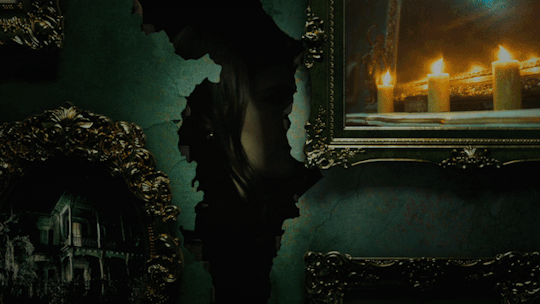
*disclaimer*
This post will be split up into multiple parts as it is very lengthy.
The point of this post is not to discuss how the show adapts the source material, but instead how the show stands on its own, utilizing psychological and mythic motifs in its plot and character journeys.
For those who want to see the show, it is available on physical DVD and Blue-Ray as well as streaming. The entire eight episode first season is available on AMC+ which you can get a free trial for through Prime Video channels.
A second season has also already been green-lit. However the first season ends on what I would consider a very satisfying note.
Part One, Part Two
————————————————————————
THE TRIPLE GODDESS: MAIDEN, MOTHER, CRONE
Aside from Rowan’s story, there are two other Mayfair women whose lives we follow. The progenitor Suzanne in the 17th century, and Rowan’s biological mother Deirdre. While together they each represent one of the goddesses, we also see each of them move through these roles in their own journeys.

The concept of the triple goddess also has strong roots in the myth of the Greek Fates and the Norns of Norse myth. Both represent the Birth/Life/Death cycle. This archetype is also strongly associated with Persephone, Demeter and Hecate, or Artemis, Selene, and Hecate.
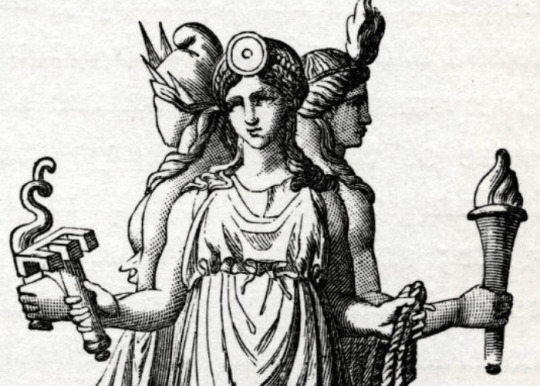
Each of these Mayfair women has a role directly associated with life and death. For example, Suzanne is a midwife whose work, like her aunt says, is not just curing people but also helping give them a good death.
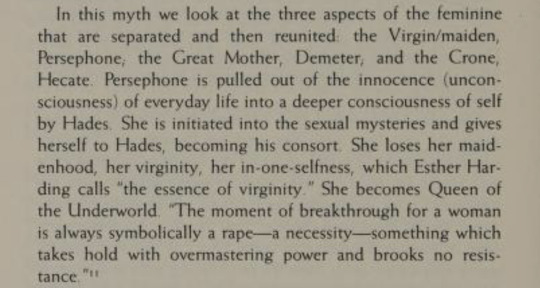
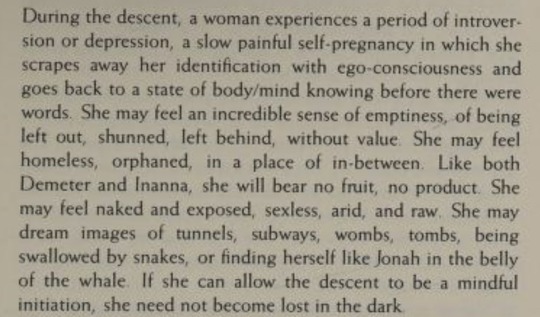
Rowan, like Persephone as Maureen Murdock puts it, is pulled out of the innocence of everyday life into a deeper consciousness of self by Hades. Or in this case Lasher.
Furthermore, Deirdre like Demeter is overcome with grief and surrenders to her sorrow, when her daughter is taken from her. However in this instance her daughter is taken away by Carlotta.

Suzanne is like Hecate as Jean Shinoda Bolen describes, a guiding companion force. When Rowan meets a crossroads in her journey at the Witching Hour, Suzanne is there to guide her as the first matriarch, as a mistress of life and death.
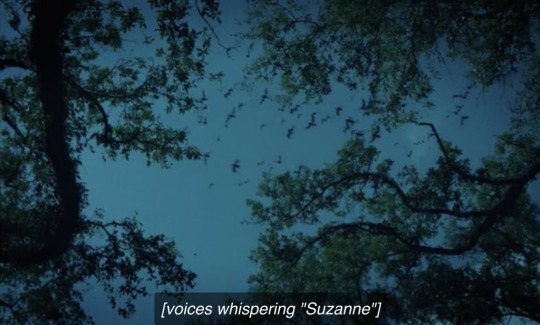
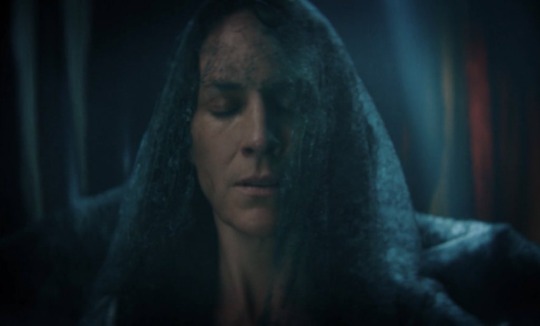
They each have mirroring moments in their journeys. Just like Rowan, Suzanne too was visited by a murder of crows, and the Dark Night of the Soul that Rowan is facing is likened in dialogue to the dark subconscious place Deirdre is trapped. In fact, episode two is titled The Dark Place.
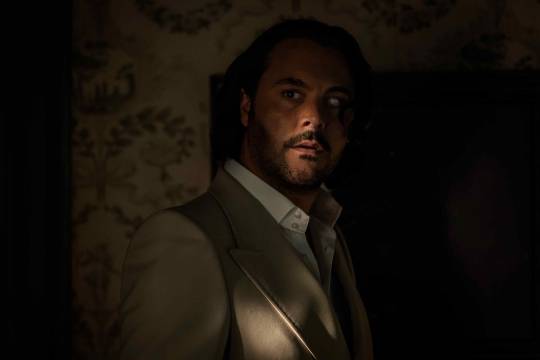

Each of them share the same animus. A being known as Lasher. He is bonded to each of the “Designees”, the matriarchs of the Mayfair family. We’ll delve into him soon enough.
DREAMS AND THE SUBCONSCIOUS
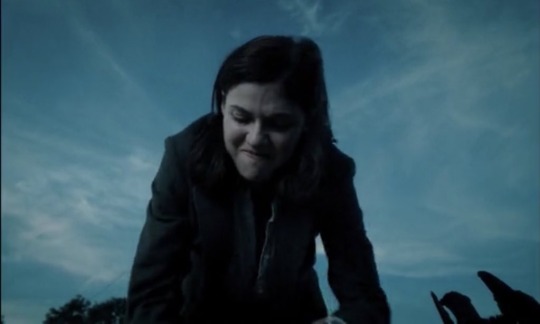
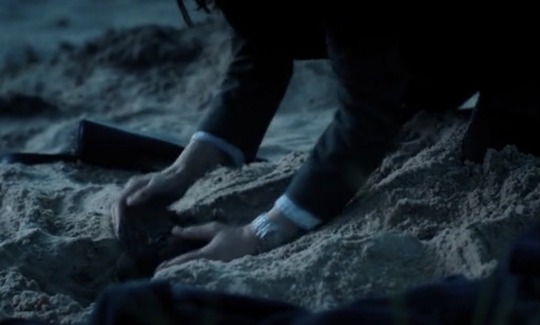
When Rowan uses her powers on the crows, causing a couple of them to fall down dead, she lays them down in her jacket, and drives off to a beach. She then walks to the shore and digs into the sand until she has a hole she can bury the crows in.
After this she takes a pill to force herself to sleep, both exhausted and desperate to flee into oblivion to escape her consciousness as it begins to recognize her shadow. But now as she is laying by the ocean, she is submerged in the unconscious.

She experiences a dream that evokes Cinderella, fairy godmothers, transformation, and spiritual death. She is wearing a shimmering blue gown, and is chasing after Ellie who is leading her somewhere. She runs after her mother, who leads her to The Mayfair House.
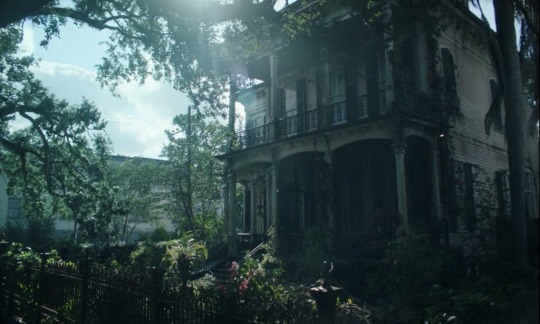
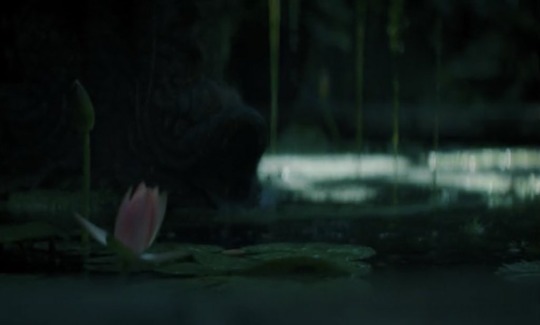
Whenever we see the house, it’s presented as a piece of nature itself, overgrown, hidden among trees, and the sound of water. It is a true representation of the subconscious, the underworld.
A FALSE START AND CLEANSING FIRE
When she finally goes to New Orleans, we think she’s going to get the answers she needs and reconnect with the feminine. However forces intervene and Rowan’s first impression of her Mayfair lineage and the power she possesses is one of fear, in part thanks to Ciprien Grieve. He means well, but his actions and perspective are a literal extension of Ellie as the “too good mother”.
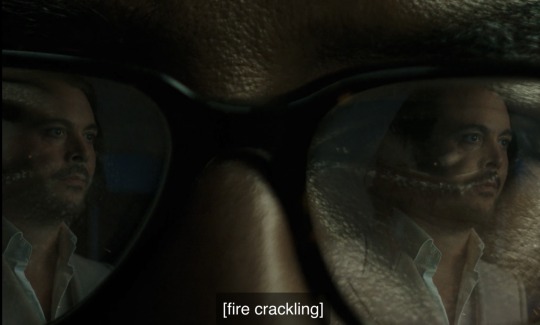
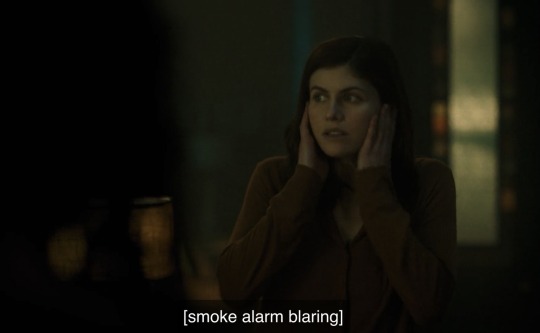
The organization called the Talamasca that Ciprien is part of, actually puts a spell around his building where Rowan is staying. Which acts as a wall or barrier keeping Rowan separated from her Shadow. It was made to keep Lasher out. This is when we have that cleansing flame, as Lasher sets a fire to get the alarms to go off and Rowan to leave the building.
And the first thing she intends to do, is find the Mayfair House which as we know is her subconscious…
End of Part Two
#heroines journey#alchemy#jung’s shadow#jungian archetypes#greek mythology#mythology#folklore#fairytales#mayfair witches#rowan mayfair#rowan x lasher#mythic romance#alchemical marriage#maureen murdock#anne rice#myth and legend#triple goddess#persephone#demeter#hecate#cinderella
20 notes
·
View notes
Text
widomauk and Lucien/Caleb fairytale romance but with swan lake motifs. Caleb losing Molly, and then being so easily charmed when his Circus Man suddenly appears again, even as he's hit with the creeping sense of dread that something about this person he used to love feels so terribly wrong. Is this anything--
#I think about how caleb always saw mollymauk in lucien even after lucien tried so hard to fool him into believing the other was truly gone#how lucien refers to the empire kids as 'your caleb and beauregard' to molly and gloats that he's going to take them with him#caleb widogast#lucien tavelle#the way lucien claims to hate the nein even as he cant bear to let them go. molly's love twisted into a kind of possessiveness and#desperation for conneciton#anyway#the circus man and magician all work so well with fairytales archetypes to me
7 notes
·
View notes
Text
Fairytales - All of us are our own Prince Charming
A few years ago, I attended this workshop about storytelling and the ancient legends of Great Britain (where I live), and the host said that as a society we are suffering from a ‘crisis of metaphor’. What he meant was that we tend to take things too literally and therefore miss symbolic significance.
An area where I see this happen over and over again is our interpretation of fairytales - namely, this idea of a princess being saved by a prince, and the modern notion that it teaches little girls they need a man to rescue them.
This is valid, but only because we fail to teach little girls (and boys!) the true meaning of such tales. In fact, the most well-known fairytales date back not just centuries but millennia, because they contain elements of older myths. For instance, the three fairy godmothers in Sleeping Beauty are the three fates found in Norse and Greek mythology - who also appear as the three witches in Macbeth. The notion of an apple of temptation in Snow White, too, has its origins in ancient Greek legend - not to speak of its allusion to the Garden of Eden.
The reason such tales have persisted in popular culture for so long is that they speak to something deep inside us, and this goes well beyond just promoting the idea of a girl needing a man to save her. For this reason, there are books out there psychoanalysing classic tales as if they were dreams, from both a Freudian and a Jungian perspective. We also got taught to analyse stories in this manner in my English degree, once upon a time.
As a brief example, I’ll return to Sleeping Beauty. As a little girl, she's hidden away and protected from all eyes, especially men’s eyes, as if trying to keep her young forever. Her parents refuse to allow her to touch that magic spindle, which is a symbol for puberty and awakening sexuality. I mean...a needle, and a bloom of blood?? However, this growth is inevitable. Despite how much they try to keep her from being exposed to the outside world, Aurora finds the spindle anyway and falls into a deep sleep.
This sleep not only affects her but the whole kingdom. Everyone goes unconscious, other than the witch / dragon. The prince then has to fight through thorns to reach the princess and defeat the dragon. A crucial question is: why would he do this? Surely there are easier princesses to win! And if we look at the Disney rendition, he literally just saw Aurora talking to squirrels and owls and immediately fell in love with her, instead of thinking she was a bit odd. All of this tells us we can’t take it literally.
The dragon and thorns are the internal defensive measures to try to keep out the prince, who represents everything that was being repressed - the awakening moment that will bring Aurora into the adult world the parents and fairies were so keen to hold her back from. In this sense, we can say that the witch and the prince are both other aspects of the princess. In other words, there is no girl in need of saving by a man. The man is part of the young woman. She is saving herself. There is no kiss to wake her up magically - this is symbolic of her emotional awakening and transition into adulthood. This is why she is named Aurora, a reference to the dawn.
We can look at every popular fairytale in this way and see that each character is an archetype. Each of us, male or female, holds all these archetypes within us. So, fairytales are not merely stories but ways of symbolically exploring growth experiences and journeys we all go through. In this way, even a little boy hearing one of these tales can relate to the princess. Every boy is the princess and prince - every girl is the princess and prince.
What is key is making sure that the symbolism is strong. Don’t explain all of this to young kids and ruin the magic. But as our children grow and begin to be aware of the symbols, we can explore it with them and teach them that each and every one of them has the power within to be their own Prince Charming and free themselves from any 'evil spell'.
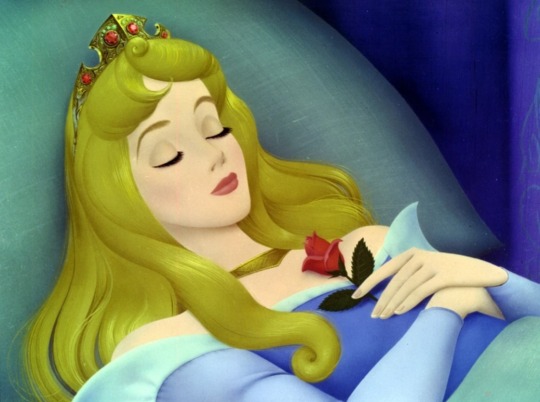
#fairy tales#fairytale analysis#fairytale meta#sleeping beauty#sleeping beauty analysis#jungian#archetypes#Freudian#symbolism#myths#prince charming
19 notes
·
View notes
Text
it may totally be just an addition from brennan but jack helping tim out at the beginning sounds like possibly modified-to-fit-better-thematically tales from beyond, a feature of the college of spirits
#even if that specific instance wasn't any actual feature tales from beyond fits very well as like fairytale archetype things#so there's no confirmation that tim is a college of spirits bard but that's my current guess#neverafter
25 notes
·
View notes
Photo

Tropes and Archetypes: Happily Ever After
“I think we ought to live happily ever after.”
#archetypes#archetype#literary archetype#tropes#tropes and archetypes#archetype aesthetic#fairytales#fairytale#fairy tales#fairy tale#fairytale aesthetic#pink#happily ever after
69 notes
·
View notes
Text
Masterpost 9: The Yaga Journal
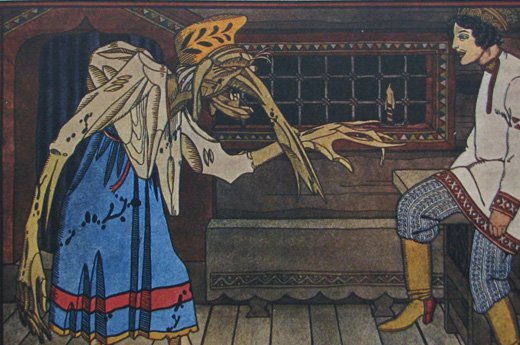
(I usually do not place pictures in my masterposts, but I had a spare of unused Yaga pictures, so...)
Intro - Baba Yaga in flesh and bones
The articles:
The road to the otherworld
A system of supernatural characters
Trade in cannibalism
Witches and demons of Eastern Europe
The Polish Baba Yaga
The Romanian baba Yaga
Baba Yaga in the lubok
Baba Yaga in Soviet movies

#masterpost#the yaga journal#baba yaga#slavic folklore#russian folklore#russian fairytales#russian fairytale#slavic fairytales#fairytale witches#witches in fairytales#fairytale archetype
37 notes
·
View notes
Text
Salt as the Arcane Substance
Carl Jung Depth Psychology Facebook Group
SAL
Salt as the Arcane Substance
[234] In this section I shall discuss not only salt but a number of symbolisms that are closely connected with it, such as the bitterness of the sea, sea-water and its baptismal quality, which in turn relates it to the Red Sea. I have included the latter in the scope of my observations but not the symbol of the sea as…

View On WordPress
#Alchemy#AnalyticalPsychology#Anima#Animus#Archetype#Buddha#Carl Jung#Christ#CollectiveUnconscious#Consciousness#DepthPsychology#Dreams#Ego#FairyTales#Freud#God#Individuation#Introversion#Jung#Jungian#Mysticism#Myth#Mythology#Persona#Psyche#Religion#Shadow#Spirituality#Types#CarlJung
11 notes
·
View notes
Text
actively avoiding any kind of metaphorical interpretation of the stepmother sometimes magic women are just fucked up
#like ohh shes obviously The Corporations like . that doesnt rlly make sense 2 me why is it implied she takes mother figures in particular ?#why would she even appear as the archetypal fairytale stepmother if that was the case ? idk
14 notes
·
View notes
Text
Mythic Symbolism in the Mayfair Witches
a mythic and psychoanalytical thread exploring themes of: alchemy, star lovers, fairytales, greek myth, three fold goddesses, and beastly grooms within the amc series ‘anne rice’s mayfair witches’

*disclaimer*
This post will be split up into multiple parts as it is very lengthy.
The point of this post is not to discuss how the show adapts the source material, but instead how the show stands on its own, utilizing psychological and mythic motifs in its plot and character journeys.
For those who want to see the show, it is available on physical DVD and Blue-Ray as well as streaming. The entire eight episode first season is available on AMC+ which you can get a free trial for through Prime Video channels.
A second season has also already been green-lit. However the first season ends on what I would consider a very satisfying note.
Part One, Part Two,
- - - - - - - - - - - - - - - - - - - - - - - - - - - - - - - - - -
SEPARATION OF THE FEMININE AND THE ILLUSION OF SUCCESS
Our heroine Rowan was adopted, and we do come to learn the way she was separated from her birth mother. But from the start, despite having a loving adoptive mother, Rowan expresses nonetheless that she is searching for “home”.
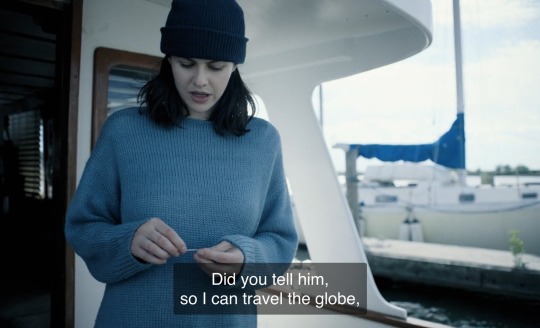

This becomes more apparent later, as we see Rowan admit she wants to understand her genetics, where she comes from. Who she really is. Something that has been one way or another discouraged by her archetypal “too good” mother Ellie.
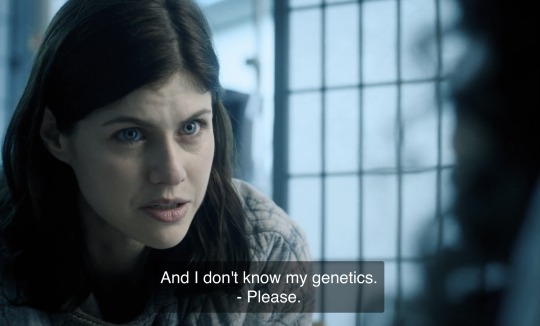
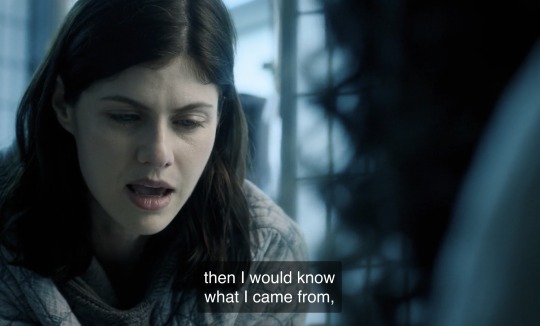
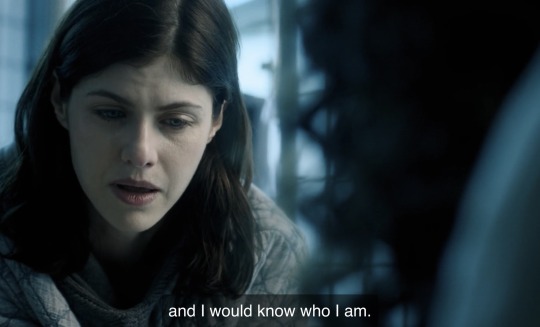

Rowan has compensated for this void and lack of control in her life, through success in her career. This is where we see how she has identified with the masculine and begun to traverse the male dominated medical field. She is confident in her ability to play the game until she comes out on top.
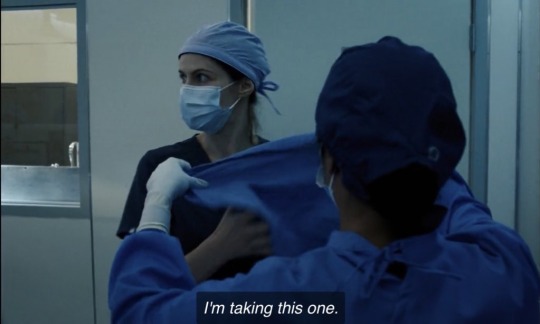
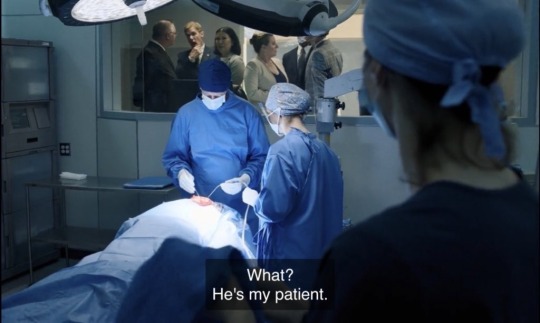


The dragon among her trials, is when Rowan learns that her mother Ellie’s cancer has returned. Her boss Dr. Keck appears seemingly as an ogre guarding her bridge toward finding a solution. Which leads her ultimately toward experiencing the illusory boon of success.
She goes to see Daniel Lemle about the position at his company. He is enthusiastic about the aspects of Rowan Dr. Keck was critical of, and to have her on his team and her mother submitted to the trial. This is that male validation she has been yearning for. However as she gets to know him and his style further, her enthusiasm wavers.
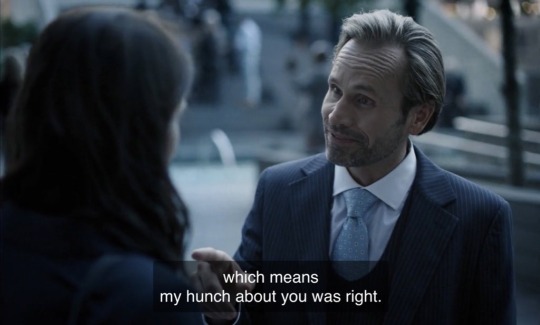
Once again she is encouraged to “run with the boys” to be a “killer”. And if she does this, she will succeed in retrieving the healing elixir for Ellie. However this means replacing an existing candidate in the trial with her mother.


This is something that morally she can not do. Fed up and in grief, this moment shatters her composure so thoroughly that the power inside of her which she has all along been struggling with (and that her ordinary world was not capable of addressing) lashes out at Lemle to his demise.
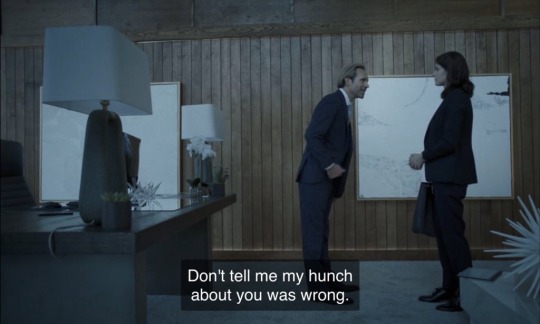


SPIRITUAL ARIDITY AND THE BLACKENING
Earlier when she is having a tryst with Max the bartender, we see how her intomacy is intentionally distant. She yearns for home, for companionship, but also doesn’t want to deal with the vulnerability that comes with it.

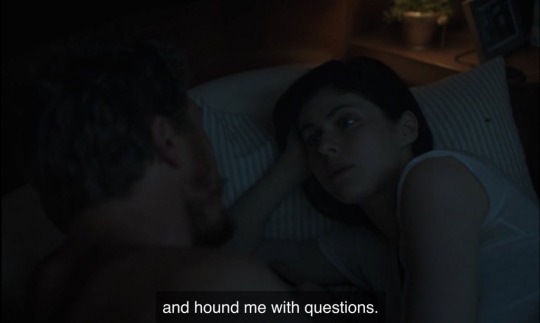
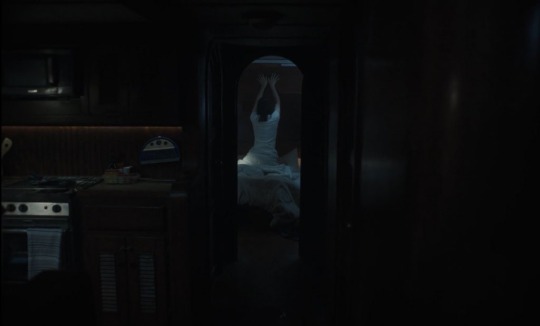
She compares the true love Max seeks, to something she experienced as a child with her literal and metaphorical shadow. She says it knew her thoughts and her secrets and had always loved her. But in the current state she is now, she looks back on this and dismisses it though the thought of it makes her wistful.
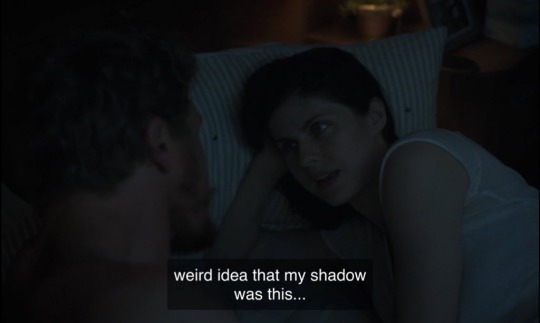


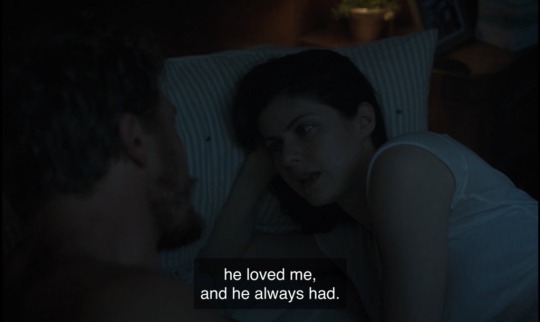
Rowan has ignored her shadow since she was young. Following her guilt and the passing of her mother, that’s now becoming impossible to keep doing. After Rowan flees her counselling session, dishonest with and in fear of herself, she is faced with a murder of crows perched by her car.
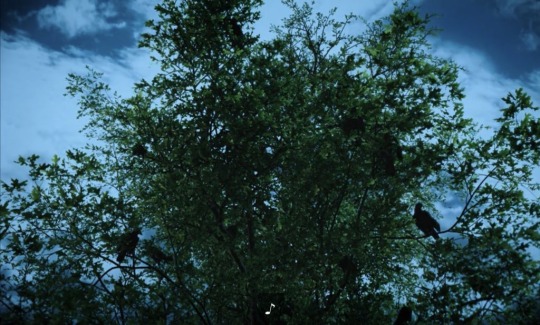
In alchemy, the crow is associated with the stage of Nigredo, calcination, or the Blackening. This is a stage of cleansing through the burning of ingredients into ash, often associated with death. To Jung this is the Dark Night of the Soul. Robert Bly also ties crows to the Shadow and the need to face it. We see crows and smoke heavily featured in promotional material for the show.
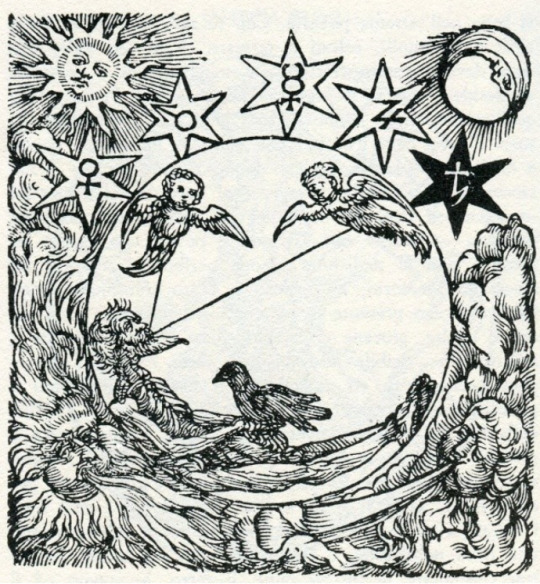

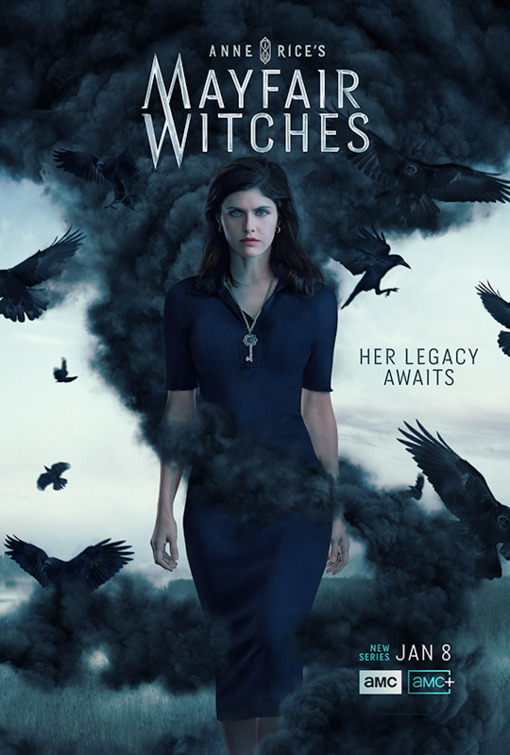
The bulk of the season then goes on to follow Rowan as she begins her descent to the goddess and encounters the literal personification of her shadow, of her animus. Progressively fulfilling stages in the alchemical process…
End of Part One
#heroines journey#alchemy#jung’s shadow#jungian archetypes#mythology#folklore#fairytales#mayfair witches#rowan mayfair#rowan x lasher#greek mythology#mythic romance#alchemical marriage#maureen murdock#anne rice#myth and legend#robert bly
13 notes
·
View notes
Text

Once I write my knight wizard it's o v e r for yall
#;ooc#ooc#*over for me#IMAGINE FOR A SEC-!!!! the most honorable genuine chivalrous easy going sweet knight u could ever meet#if ghibli hugs could be manifested a person; he would be that#a knight in shining armor like the ones in fairytales#THE HERO ARCHETYPE! its always the knightly ones im#he is like if sunflowers were a guy;; very wanwan (dog) coded but also very firm about his beliefs#he's that one gym bro that tells u good job after u do ur reps and gets excited about ur progress#im writing him just so i can yell into the void about him in my blog truly#i dont know how to explain how tender shaped he is im just -WAVES HANDS-#also an indifferent chef that is around 600+ years old that is surprisingly very kind#and a wizard that if i could describe in a word it would be ' intoxicating '#i hold them in my arms#i will perish on this hill (wizard bf hill)#im out rn but;; IT WILL HAPPEN EVENTUALLY!
5 notes
·
View notes
Text
this is so specific to me only but. i was an og fan of The School for Good and Evil series. i *devoured* those books as a tween. im now watching the 2022 adaptation and... it being a movie MURDERS the pacing that made the books good.
also agatha being objectively ugly was SO important to the story. her actress is literally gorgeous, so all the comments about her being gross and ‘witchlike’ for... not wearing a dress when she first showed up and being kind of snarky fall flat. agatha was UGLY but she was GOOD!! she was loved and kind and brave and still ugly!!! even the ball scene where she has her ~glow-up~, the features that made her ‘ugly’ dont disappear- she literally just learns to smile and project happiness and her inner kindness and that’s what makes her pretty.
i also hate the direction they took for sophie. i guess it was to make her more sympathetic, but her viewing agatha as a charity case that she grew to love was such a great demonstration of her selfishness, but also her capacity to still love despite being vain and shallow and ambitious. in the movie, we’re told she earnestly loves aggie right from the start.
there’s also a bunch of small beats and the way things unfold that i know were done to cut time to fit in a movie-length runtime, and exposition dumps instead of it more naturally unfolding with the story... but the story suffers for it. it’s such an easy fix too!! just make it a TV show! it has the perfect pacing with the mystery elements and a clear overarching goal!! why did they make it a movie????
#the school for good and evil#i really liked the way the books meaningfully deconstructed fairytale tropes#what it had to say about archetypes especially the 'good' ones and how it restricts freedom and happiness#it tells us that love of your best friends is just as important as romantic love!! that it is equally fulfulling!#how sophie and tedros could only form a meaningful connection when the expectation of their traditional roles were stripped away#and how powerful that connection was#sophie wasnt a stealing harpy she had a tangible connection with a love interest that wasnt her own and it was good!!#also bi king tedros#AND they did the maleficient twist of ''true love's kiss' being platonic years before that movie came out!!!!#i dont think *all* the gender commentary is 100% on the money but it did have interesting things to say
11 notes
·
View notes
Photo


Adult science fiction/fantasy novella (would probably have good crossover with a YA audience, though)
Retelling of “Sleeping Beauty” following Zinnia Gray, a folklore-obsessed young woman with a rare disease that will kill her by her 22nd birthday
On her 21st birthday, she pricks her finger on a spindle at a Sleeping Beauty-themed party and finds herself transported to a fairytale world where she must help a storybook princess with her curse
Fairytale multiverse!
Tongue-in-cheek story of subversion, but also a deeply angry exploration of female agency and defying fate
Lesbian side characters
#this was good!#worked really well as a novella i think#a full novel of the tongue-in-cheek exploration of fairytale archetypes might have gotten old#but i think this worked well as short#also spoilers: can't speak on the depiction of the protagonist's illness but she isn't completely cured via miracle at the end#also there was one meme reference that made me laugh#this was reallyyyyy different from alix e harrow's debut novel which impressed me#love it when authors have the range…#fractured fables#a spindle splintered#alix e harrow#lulu speaks#2022 reads#lulu reads#lulu reads fractured fables#lulu reads a spindle splintered
7 notes
·
View notes